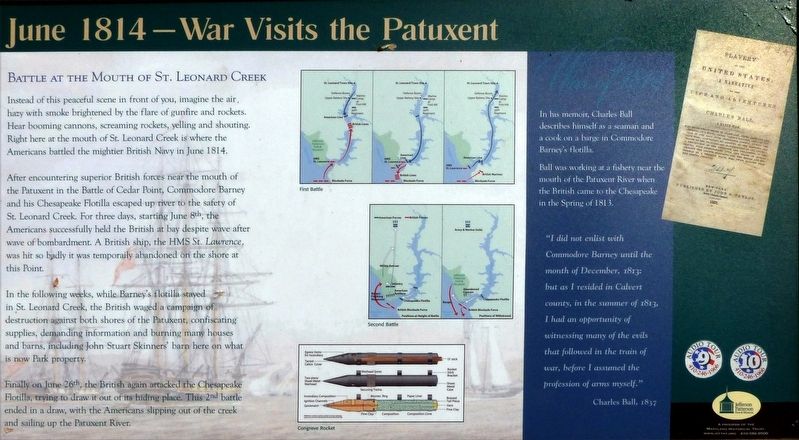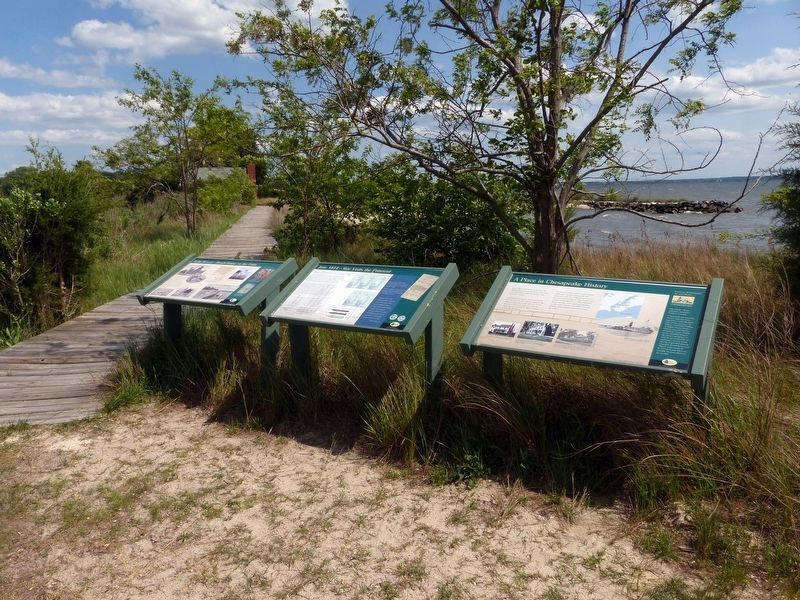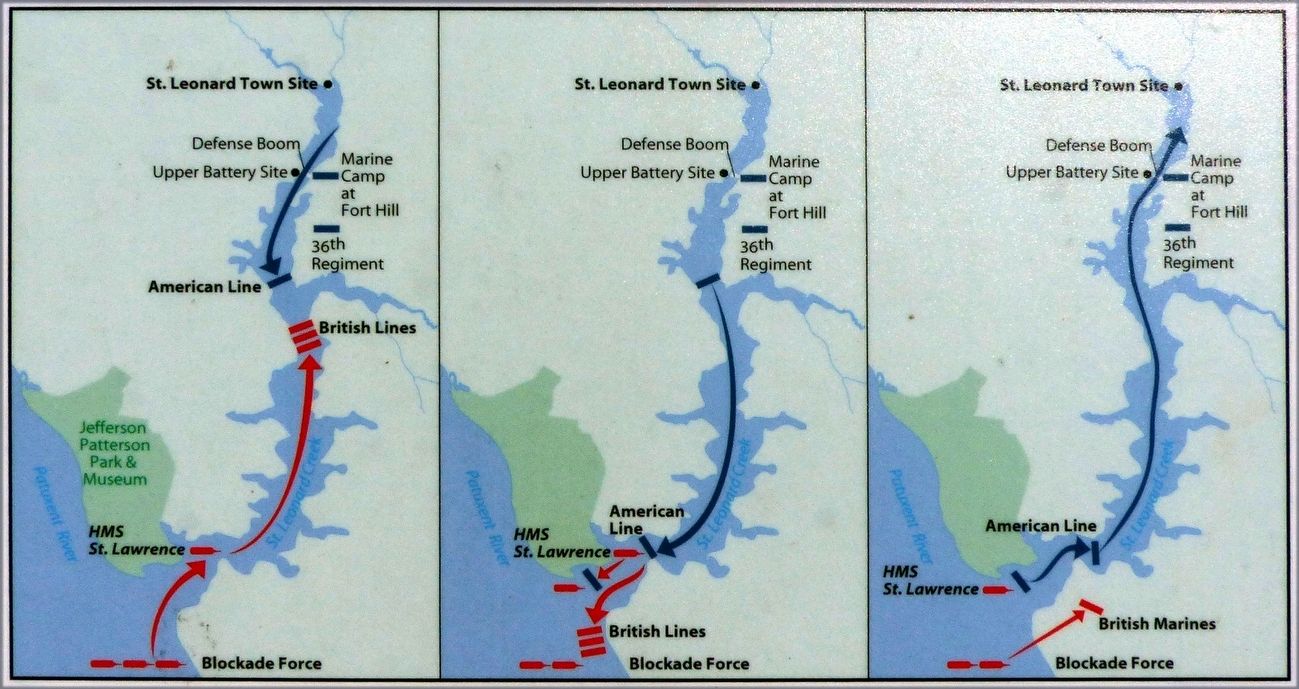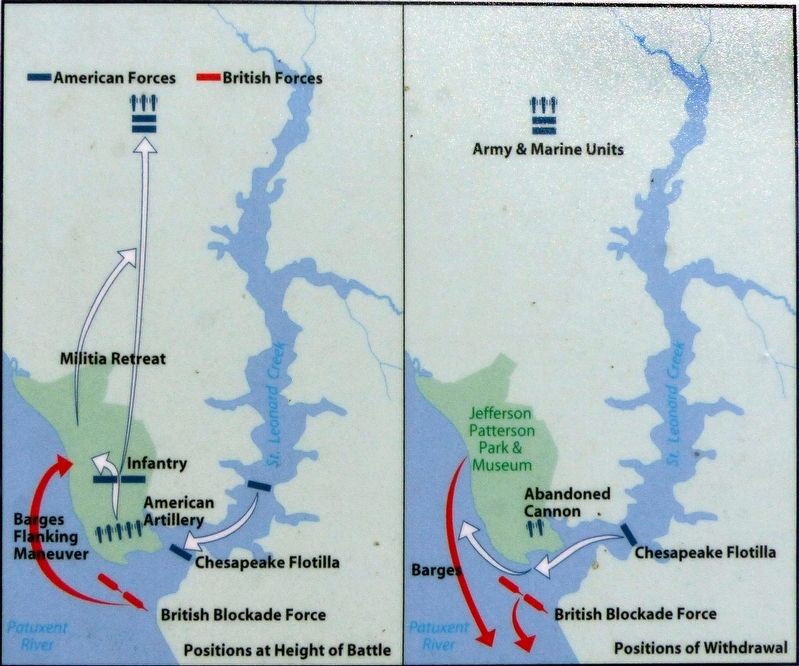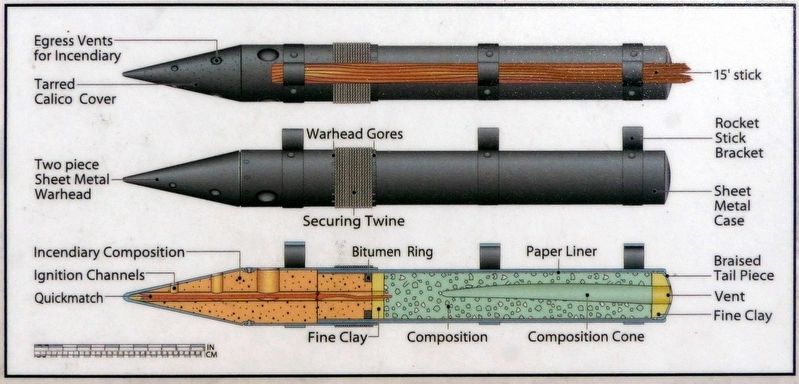St. Leonard in Calvert County, Maryland — The American Northeast (Mid-Atlantic)
June 1814 — War Visits the Patuxent
— Battle At The Mouth of St. Leonard Creek —
After encountering superior British forces near the mouth of the Patuxent in the Battle of Cedar Point Commodore Barney and his Chesapeake Flotilla escaped up river to the safety of St. Leonard Creek. For three days, starting June 8th, the Americans successfully held the British at bay despite wave after wave of bombardment. A British ship, the HMS St. Lawrence, was hit so badly it was temporarily abandoned on the shore at this point.
In the following weeks, while Barney's Flotilla stayed in St. Leonard Creek, the British waged a campaign of destruction against both shores of the Patuxent, confiscating supplies, demanding information and burning many houses and barns, including John Stuart Skinners' barn here on what is now Park property.
Finally on Jun 26th the British again attacked the Chesapeake Flotilla, trying to draw it out of its hiding place. This 2nd battle ended in a draw, with the Americans slipping out of the creek and sailing up the Patuxent River.
Topics. This historical marker is listed in this topic list: War of 1812. A significant historical month for this entry is June 1814.
Location. 38° 23.381′ N, 76° 30.444′ W. Marker is in St. Leonard, Maryland, in Calvert County. Marker can be reached from Mackall Road. on Peterson's Point in Jefferson Patterson Park and Museum. Touch for map. Marker is in this post office area: Saint Leonard MD 20685, United States of America. Touch for directions.
Other nearby markers. At least 8 other markers are within walking distance of this marker. Idyllic Retreat — Beach House on the Point (here, next to this marker); A Place in Chesapeake History (here, next to this marker); Smith’s St. Leonard Site (approx. 0.3 miles away); Land Battle Evidence (approx. 0.3 miles away); Valor at St. Leonard Creek (approx. 0.3 miles away); John Stuart Skinner (approx. 0.3 miles away); “We Must Have Done Them Considerable Damage” (approx. 0.3 miles away); “The Commodore Can Beat Any…Barges…Sent Against Him” (approx. 0.3 miles away). Touch for a list and map of all markers in St. Leonard.
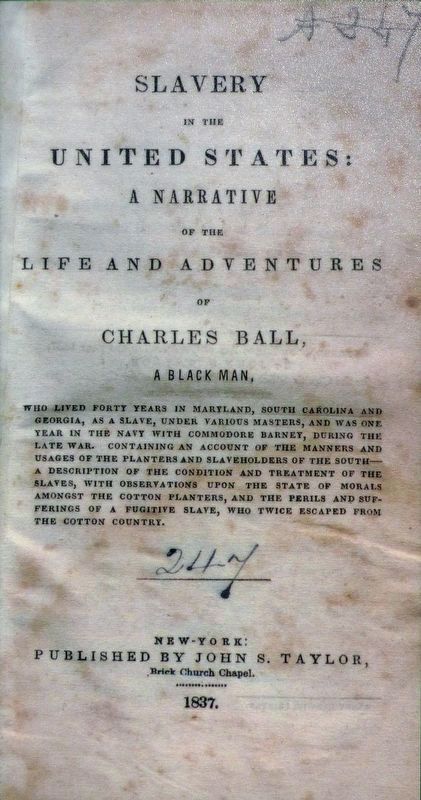
Photographed By Allen C. Browne, May 15, 2016
6. Slavery in The United States: A Narrative…
In his memoir, Charles Ball describes himself as a seaman and a cook on a barge in Commodore Barney's flotilla.
Ball was working at a fishery near the mouth of the Patuxent River when the British came to the Chesapeake in the Spring of 1813.
"I did not enlist with Commodore Barney until the month of December, I8I3: but as I resided in Calvert county, in the summer of I8I3, I had an opportunity of witnessing many of the evils that followed in the train of war, before I assumed the profession of arms myself." Charles Ball, 1837
Credits. This page was last revised on July 16, 2016. It was originally submitted on July 15, 2016, by Allen C. Browne of Silver Spring, Maryland. This page has been viewed 535 times since then and 16 times this year. Photos: 1, 2, 3, 4, 5, 6. submitted on July 15, 2016, by Allen C. Browne of Silver Spring, Maryland. • Bill Pfingsten was the editor who published this page.
